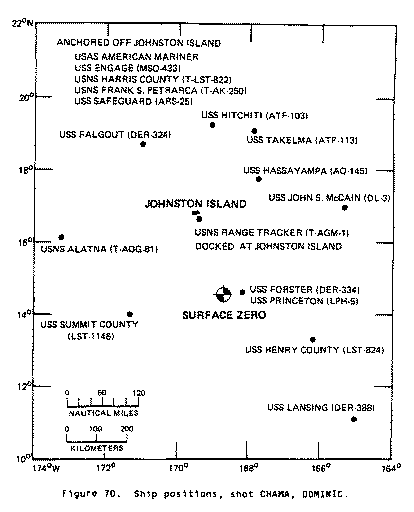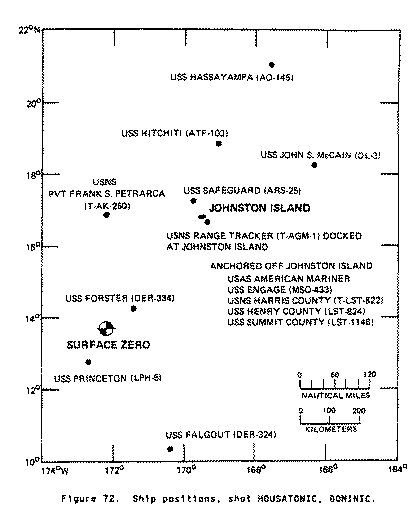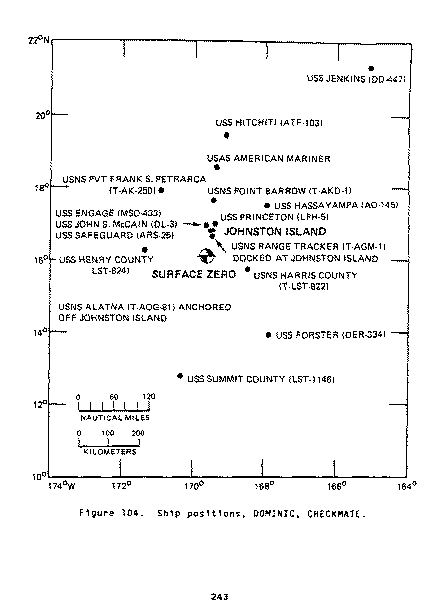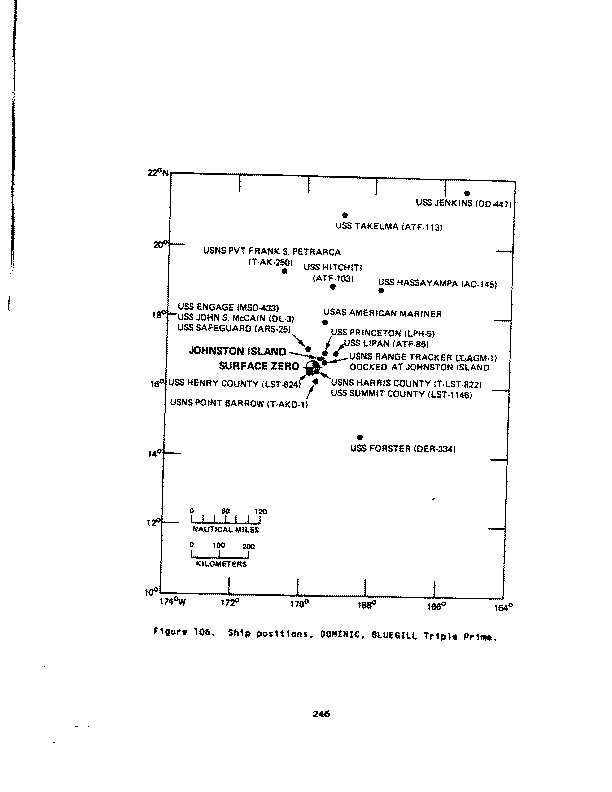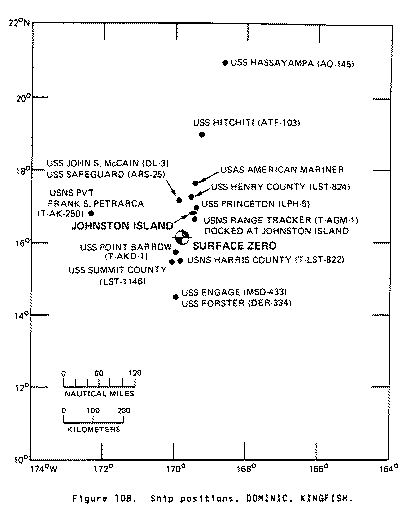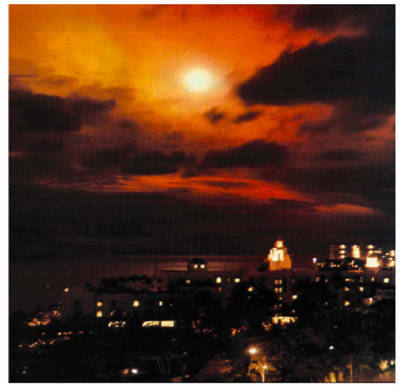| Posted
on: Sunday, July 2, 2006
http://the.honoluluadvertiser.com/150/sesq3nucleartests
Nuclear tests
By
Mike Gordon
Honolulu Star Advertiser Staff Writer
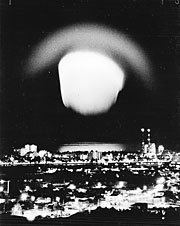 |
| The
detonation of a 3.8 megaton warhead over Johnston
Island in 1958 produced a fireball that lit up
Honolulu. The tests at Johnston Island continued
until late 1962.
Advertiser
library photo
|
Hawai'i
residents were shoved into the nuclear age without warning
when the United States detonated a hydrogen bomb over
Johnston Island that was visible in Honolulu, some 800
miles away. It was the first of a dozen similar tests in
the 1950s and 1960s.
The
blast on Aug. 1, 1958 — code-named Teak Redstone — was
accomplished by sending a 3.8 megaton warhead to an
altitude of 48.3 miles and detonating it at 12:50 a.m. But
the flash awakened and terrified so many people —
"many were emotionally disturbed by the
phenomenon," Gov. William Quinn told military
commanders — that advance notice was given for the next
blast 11 days later.
The
second blast, on Aug. 12, 1958, was greeted by anything
but panic.
Thousands
of residents found good locations along O'ahu's coast to
view the explosion. They packed snacks and held
"atomic parties" with the blast as the
highlight.
Months
later, the power of the two stratospheric nuclear
explosions was detailed for the first time.
They
were blamed for disrupting radio communications so
severely that airplanes were grounded throughout the
Pacific. Planes flying to Honolulu were told to stay in
touch through plane-to-plane relays over channels that
were not affected. Animals 300 miles away were blinded.
The
blasts also left a toxic legacy on Johnston Island, which
had been a national wildlife refuge since 1926.
On
June 20, 1962, Starfish, a Thor missile with a nuclear
warhead, was blown up over Johnston when it failed one
minute after launch. Metal parts and debris fell back onto
the island, injuring personnel on the ground. A month
later, on July 25, a launch dubbed Bluegill Prime was
destroyed on the launch pad, scattering radioactive
material.
The
tests continued until November 1962.
One
of the last explosions was seen by a Hawaiian Airlines
pilot flying over Diamond Head on Nov. 2, 1962. The night
sky lit up like dawn, he said.
"An
unbelievable rising sunset ... ," said pilot Richard
Barcheski, "... a churning orange center crusted with
fire ... the rainbow etched in a frightening arc ... then
a lavender-white end to everything."
|



